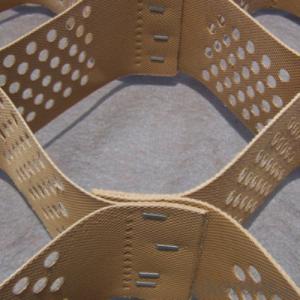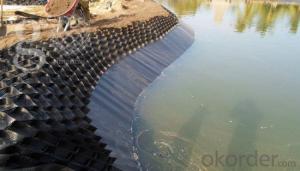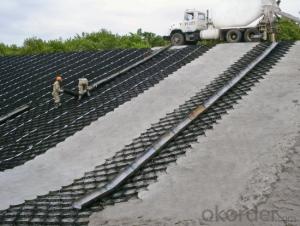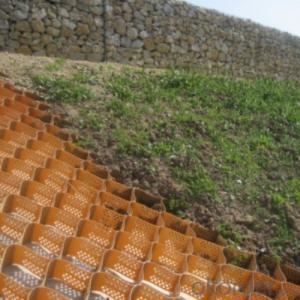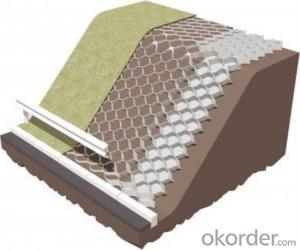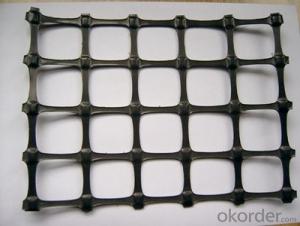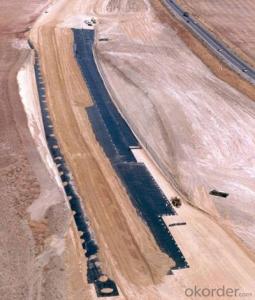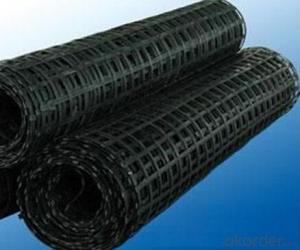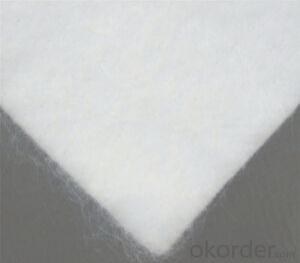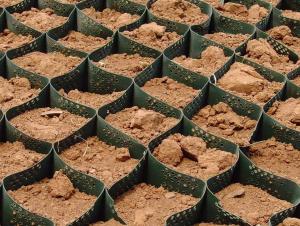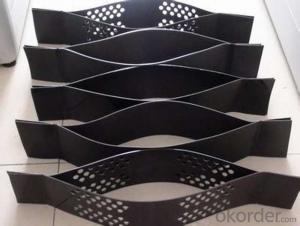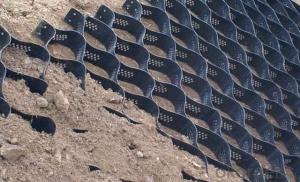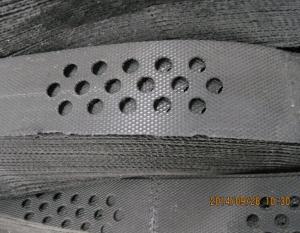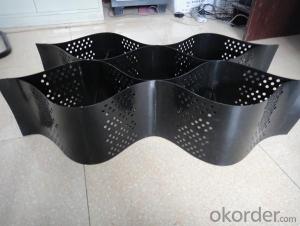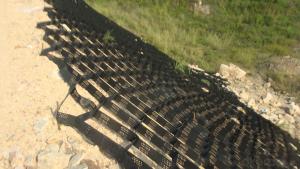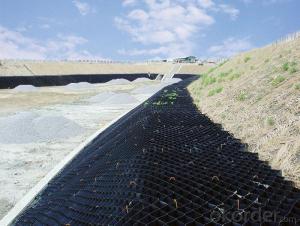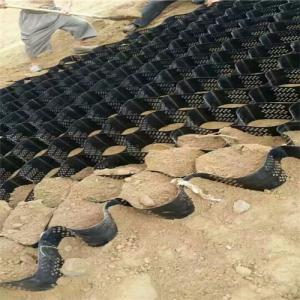Geocell of Enhanced HDPE for Architectural Engineering
- Loading Port:
- Qingdao
- Payment Terms:
- TT or LC
- Min Order Qty:
- 10000 m²
- Supply Capability:
- 500000 m²/month
OKorder Service Pledge
OKorder Financial Service
You Might Also Like
Geocell of Enhanced HDPE for Architectural Engineering
Description Of Geocell of Enhanced HDPE for Architectural Engineering
Geocell is a kind of three-dimensional network structure, which is made up of HDPE sheet material, which is formed by high strength welding.
Main Features of Geocell of Enhanced HDPE for Architectural Engineering
1, with retractile, transportation can be shrunk and stacked, the construction can be a Lacheng mesh, fill in the dirt, gravel, concrete and other loose material, with strong lateral restrictions and the stiffness of the structure.
2, light material, abrasion resistance, stable chemical properties, photooxidation aging, acid and alkali, applicable to different soil and desert soil conditions.
3, high lateral limit and non slip, anti deformation, and effectively enhance the bearing capacity of the subgrade and the role of dispersion.
4, the change of the height of the soil, welding distance and other geometric dimensions can meet the needs of different projects.
5, stretching and free, transportation volume is small; the connection is convenient, the construction speed is quick.
Applications of Geocell of Enhanced HDPE for Architectural Engineering
1, for the stability of highway, railway roadbed.
2, used to bear the weight of the embankment and shallow water treatment.
3, used to prevent the landslide and the load of the gravity of the hybrid retaining wall.
4, in the face of soft foundation. The use of soil engineering chamber can greatly reduce the construction labor intensity, reduce the thickness of the subgrade construction speed, good performance, greatly reducing the cost of the project
IMages of Geocell of Enhanced HDPE for Architectural Engineering
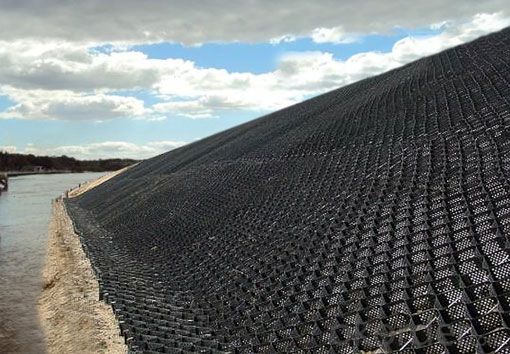

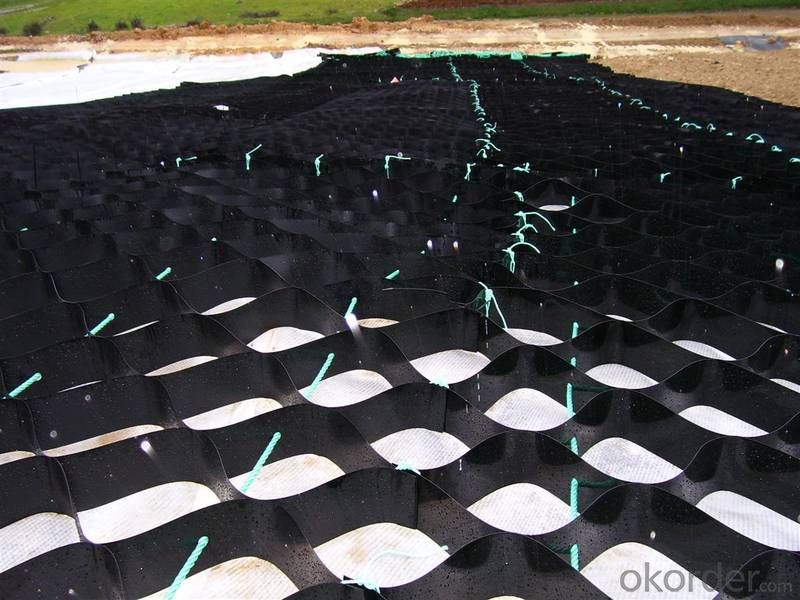
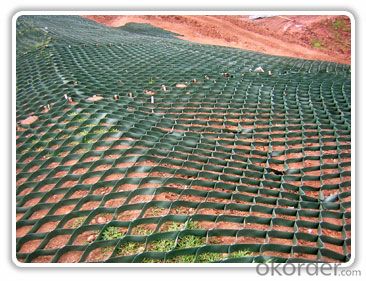
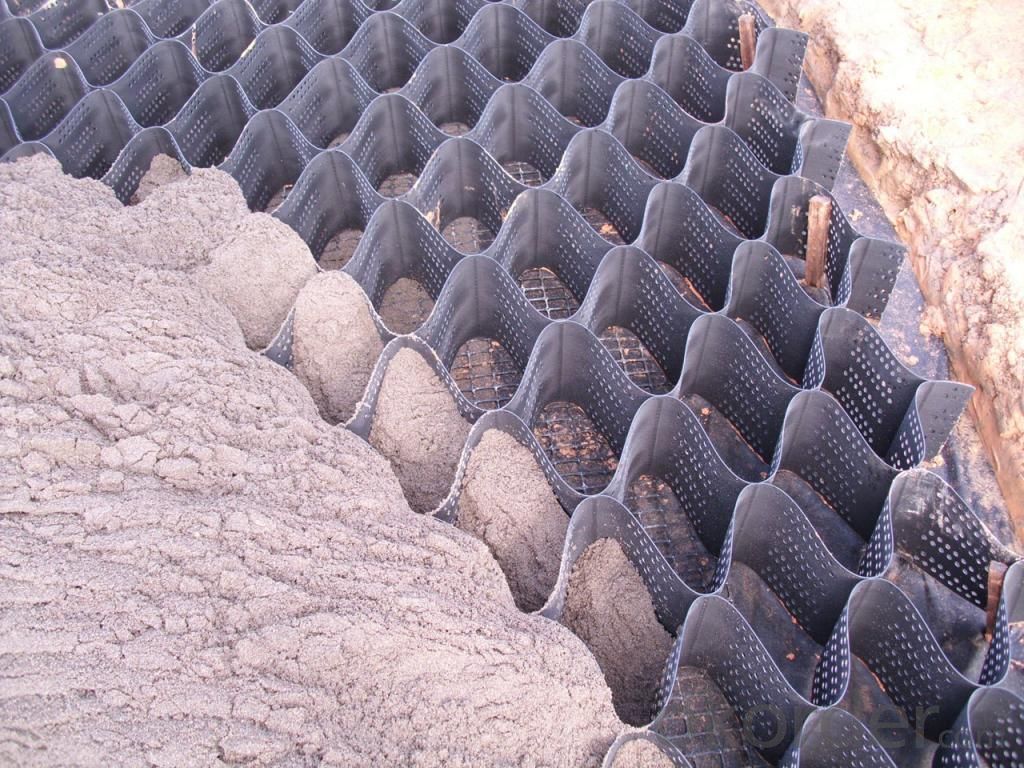
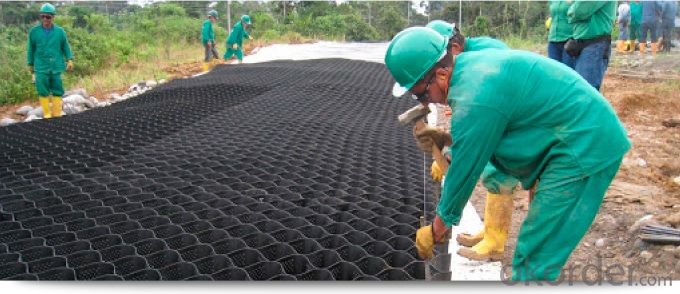
FAQ:
1. What are we supplying?
We are specialized in producing .geotextile , geocell, geogrid, geomembrane
2. How Many years experience do we have?
We have been exported to more than 15 countries in the past 10 years.
3. How long do we usually reply your request?
We always reply our customer within 12 hours.
- Q:Are geocells resistant to puncture?
- Yes, geocells are resistant to puncture. They are typically made from high-strength materials such as HDPE (High-Density Polyethylene) and have a cellular structure that can withstand external pressures and resist puncture from sharp objects.
- Q:How do geocells improve the performance of temporary access roads?
- Geocells improve the performance of temporary access roads by providing a stable and reinforced surface. These cellular confinement systems help distribute load and prevent soil erosion, enhancing the road's strength, durability, and overall performance.
- Q:Can geocells be used in temporary access roads?
- Yes, geocells can be used in temporary access roads. Geocells are often used for soil stabilization and erosion control in various applications, including temporary access roads. They provide a stable base for vehicular traffic and can be easily installed and removed when no longer needed.
- Q:Are geocells resistant to UV degradation?
- Yes, geocells are resistant to UV degradation.
- Q:Can geocells be used for rail track stabilization?
- Yes, geocells can be used for rail track stabilization. Geocells are three-dimensional cellular confinement systems made from high-density polyethylene (HDPE) material. They can be filled with different infill materials like gravel, sand, or soil to create a stable and reinforced base. By using geocells, the load distribution is improved, reducing track settlement and increasing the overall stability and longevity of the rail track.
- Q:How do geocells compare to traditional soil stabilization methods?
- Geocells offer several advantages over traditional soil stabilization methods. Firstly, geocells are lightweight and easy to transport and install, which makes them more cost-effective and efficient. Additionally, geocells provide a higher load-bearing capacity and increased slope stability, reducing the need for extensive excavation and costly reinforcement materials. Moreover, geocells have a longer lifespan and require less maintenance compared to traditional methods. Overall, geocells provide a more sustainable and effective solution for soil stabilization.
- Q:Can geocells be used for retaining walls in coastal areas?
- Yes, geocells can be used for retaining walls in coastal areas. Geocells are commonly used to stabilize and reinforce soil in various applications, including erosion control and slope stability. In coastal areas, where erosion and soil instability are common concerns, geocells can provide an effective solution for retaining walls by reinforcing the soil and preventing erosion.
- Q:Can geocells be used in wetland restoration projects?
- Yes, geocells can be used in wetland restoration projects. Geocells are a versatile and effective solution for stabilizing soil and managing water flow in various environments, including wetlands. They provide a stable base for vegetation and help prevent erosion while allowing water to permeate through the cells, promoting healthy wetland ecosystems.
- Q:Can geocells be used in subgrade stabilization?
- Yes, geocells can be used in subgrade stabilization. Geocells are three-dimensional, honeycomb-like structures made from geosynthetic materials. They can be filled with various materials such as soil, sand, or aggregate to create a stable foundation for roads, embankments, and other civil engineering structures. The geocells confine and reinforce the fill material, improving the load-bearing capacity and preventing lateral movement. This makes them an effective solution for stabilizing weak or poorly compacted subgrade soils.
- Q:What are the differences between cellular confinement systems and geocells?
- Cellular confinement systems and geocells are essentially the same thing and are used interchangeably in the industry. Both terms refer to a three-dimensional honeycomb-like structure made from high-density polyethylene (HDPE) or other similar materials. These systems are designed to provide soil stabilization, erosion control, and load support in various civil engineering and geotechnical applications. So, to put it simply, there are no significant differences between cellular confinement systems and geocells.
1. Manufacturer Overview |
|
|---|---|
| Location | |
| Year Established | |
| Annual Output Value | |
| Main Markets | |
| Company Certifications | |
2. Manufacturer Certificates |
|
|---|---|
| a) Certification Name | |
| Range | |
| Reference | |
| Validity Period | |
3. Manufacturer Capability |
|
|---|---|
| a)Trade Capacity | |
| Nearest Port | |
| Export Percentage | |
| No.of Employees in Trade Department | |
| Language Spoken: | |
| b)Factory Information | |
| Factory Size: | |
| No. of Production Lines | |
| Contract Manufacturing | |
| Product Price Range | |
Send your message to us
Geocell of Enhanced HDPE for Architectural Engineering
- Loading Port:
- Qingdao
- Payment Terms:
- TT or LC
- Min Order Qty:
- 10000 m²
- Supply Capability:
- 500000 m²/month
OKorder Service Pledge
OKorder Financial Service
Similar products
New products
Hot products
Related keywords
